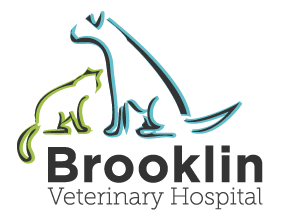Library
-
Pyothorax is the presence of inflammatory fluid or pus within the chest cavity, which is the area between the lungs and the inner walls of the ribs. Signs of pyothorax include rapid, shallow, open-mouthed breathing that may be painful, depression, lethargy, decreased appetite. Clinical examination by a veterinarian, particularly listening to the chest with a stethoscope, may indicate fluid in the chest.
-
Pyrantel pamoate is given by mouth and is used on and off label to treat intestinal parasites in many species. Give as directed. Side effects are uncommon but may include stomach upset, such as vomiting or diarrhea. Do not use in pets that are allergic to it. If a negative reaction occurs, call your veterinarian.
-
Pyrethrin insecticides are naturally derived from the chrysanthemum (mum) flower, and pyrethroids are the synthetic versions. The use of pyrethrins/pyrethroids is generally safe in dogs; however, cats and fish are very sensitive to these products.
-
Pyridostigmine bromide is given by mouth or injection and is used off label to treat symptoms related to myasthenia gravis. Give as directed. Dose-related side effects include drooling, diarrhea, increased urination, abdominal pain, muscle cramps, and increased tear production. Do not use in pets that are allergic to it or other bromides, or in pets that have urinary or gastrointestinal tract obstructions or blockages. If a negative reaction occurs, please call your veterinary office.
-
Pyrimethamine is an antiprotozoal tablet given by mouth and used off-label to treat certain parasitic infections. Common side effects include vomiting, low appetite, tiredness, and low blood cell counts. Cats are more likely to have more severe side effects. Pregnant women should handle this medication carefully.
-
Quality of life is a way to refer to and discuss the day-to-day life and lifestyle of a cat reaching the end of its life. A quality-of-life scale for cats can help owners and veterinarians work together to maintain a healthy human-animal bond. The scale looks at seven different categories including hurt, hunger, hydration, hygiene, happiness, mobility, more good days than bad. The scale can help clarify the decisions and anxiety related to your cat’s end of life care.
-
Rabies is a viral disease that can infect all warm-blooded animals, including cats and people, although some species are somewhat naturally resistant to the disease. When signs of rabies occur, it is an almost invariably fatal disease. Vaccination and post-exposure quarantine are discussed.
-
Radiation is a type of energy produced naturally by the sun, earth, and rocks and artificially by machines. Although several types of tumors can be treated with radiation therapy alone (e.g., nasal tumors, brain tumors, and certain types of lymphoma), radiation therapy is most commonly used to destroy or limit the growth of cancer cells left behind (i.e., microscopic disease) after a tumor has been surgically removed. Side effects depend on the type and location of the tumor and its surrounding tissues.
-
X-ray images are produced by directing X-rays through a part of the body towards an absorptive surface such as an X-ray film or electronic sensor. The image is produced by the differing energy absorption of various parts of the body. Bones are the most absorptive and leave a white image on the screen, whereas soft tissue absorbs varying degrees of energy depending on the density, producing shades of gray on the image. Air on an X-ray is black. X-rays are a common diagnostic tool used for many purposes.
-
Most cats care for their kittens with little need for human intervention; if they do not, then their caregivers need to step in. It is critical to maintain a warm environment and ensure they receive enough milk. Kittens’ weight should be checked daily in the first two weeks and any prolonged crying should be investigated. Feeding can be supplemented with commercial milk replacer if needed. Further feeding and vaccination recommendations are discussed. Contact your veterinarian for specific instructions.



